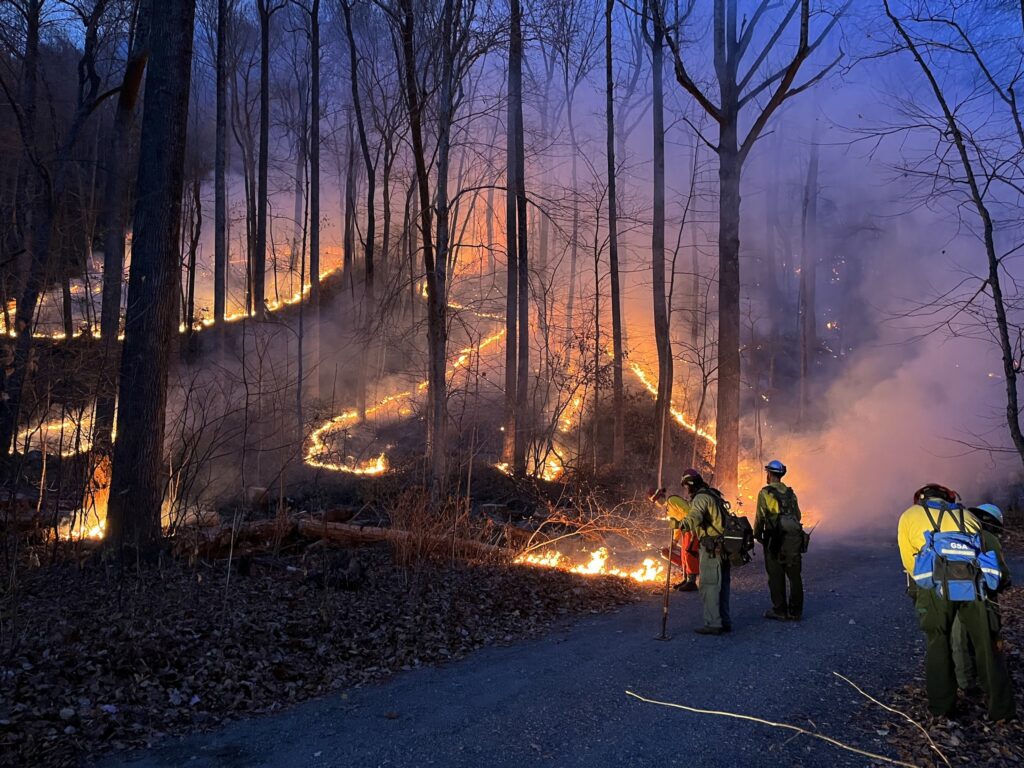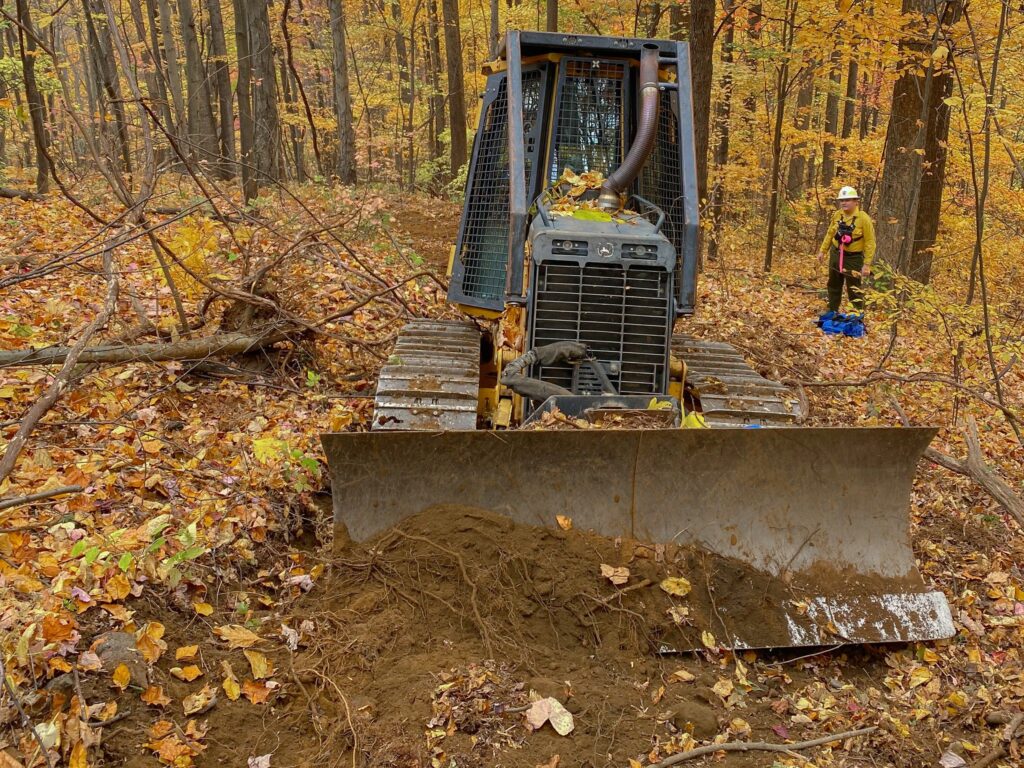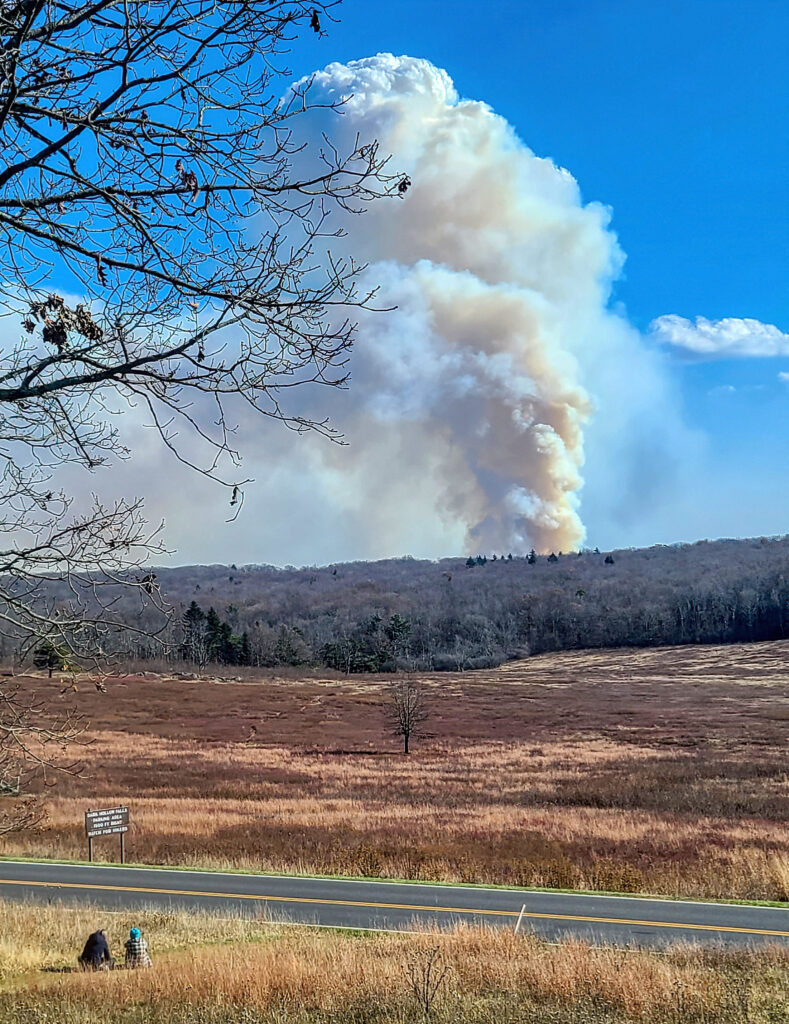What to Know About Fall Fires in Shenandoah National Park
In the past year, the effects of climate change on Shenandoah National Park have been more urgent than ever. Last winter, Shenandoah faced ice storms that brought down hundreds of trees and made sections of Skyline Drive inaccessible for nearly a month. Over the summer, fishing was prohibited due to drought conditions across the park. This fall, those debris and droughts made for perfect fire conditions in the central and south districts.
When the Quaker Run fire broke out in Madison County a few weeks ago, the park closed trails in the area, advised limited hiking due to smokey air quality, and implemented a burn ban. Delaware North closed Big Meadows Lodge and Wayside early as power lines had to be shut off. Park rangers and staff with red cards (firefighting certifications) left their regular duties to help the fire team establish containment lines – clearing swaths of the forest of leaf litter and debris, monitoring the blaze, and plumbing sprinkler lines around Rapidan Camp to protect the historic site.
With a great deal of hard work and dedication, firefighters were able to contain the flames and allowed the burn to make those 3,000+ acres of Madison County more resilient in the face of climate change. This was an unplanned fire, but firefighters were able to turn things around, and this event became a controlled blaze, something every forest needs.


Fires are not always bad. A low-intensity, controlled blaze can play a vital role in keeping the landscape healthy. Controlled burns revitalize soil, promote native plant growth, improve habitat, reduce fungal diseases, enhance an area’s natural beauty, and much more. Controlled fires can also make the land less susceptible to more dangerous wildfires by burning through excess debris and reducing undergrowth that might fuel a large, uncontrolled blaze.
Understandably, the public often has a fear of fire, and it is true that we should do our best to prevent unplanned blazes. But we must not let a fear of flames keep us from using fire to protect our park in the long run.
Preventing unplanned forest fires will allow fire teams to use healthy, controlled fires to build resilience and rejuvenate our landscapes, hopefully preventing the types of wildfires that can become extremely dangerous to people and places in the future.
Our climate is continuing to change and these extreme weather patterns are expected to become more intense. Building resilience through controlled burns is becoming increasingly important, as is having the personnel to handle those fires on our public lands.
If you’d like to help protect our park in the face of severe weather and climate change, please help us support forest health, watershed restoration, youth education, and so much more in Shenandoah.
To stay informed about conditions in the Shenandoah National Park, follow the park on social media and/or sign up for text alerts.
Learn more about the ecological benefits of fire and how wildland firefighters make decisions about how to contain fires at the Virginia Department of Forestry.
Photo credit: VDOF; NPS (Leah Cawthorn); Lara Ellis


